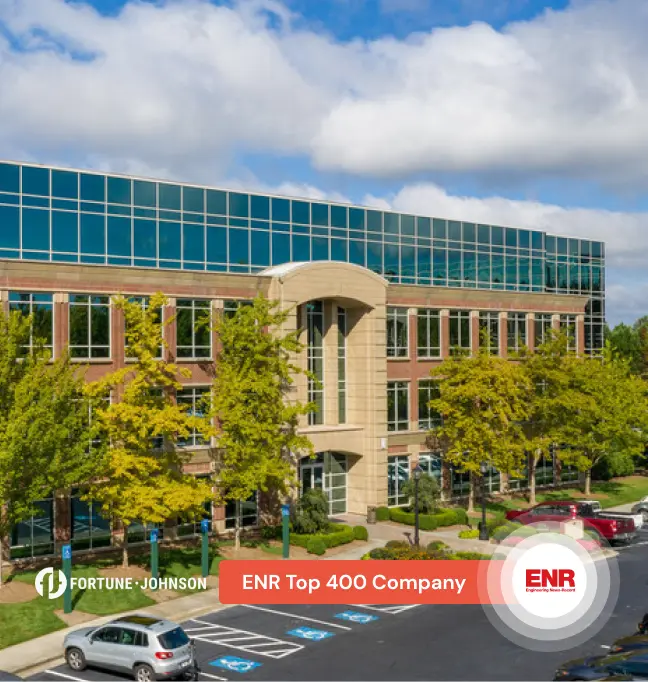Founded in 1991, Fortune-Johnson is headquartered in Atlanta with a regional office in Charlotte, NC. Fortune-Johnson views itself as a technology company, and they strive to optimize every aspect of building design, materials supply, and construction. They aim to transform how buildings and spaces come to life.
Fortune-Johnson is the premier contractor for building multi-family projects in Southeast U.S. They specialize in a wide range of build types including assisted living facilities, student housing, garden-style apartments, and high-density mixed-use developments. Fortune-Johnson has successfully completed every project undertaken and takes pride in developing long-term relationships with its customers by building mutual trust and maintaining a high standard of excellence.
THE CHALLENGE
Joe Jenkyn is the Director of Employee Relations with Fortune-Johnson. His role revolves around the managing, recruiting, hiring, and staffing of projects in concert with the operations teams.
In the past, the company used Microsoft Excel to determine workforce planning, but found “it wasn’t visually appealing, and it required a lot of work,” says Jenkyn. So, the company switched to Microsoft Visio and found it useful in multiple areas including scheduling, resource planning, and determining hiring needs.
While Microsoft Visio offered flexibility and enabled Jenkyn to pose scenarios, it wasn’t smart. “I had to drive everything… If I skipped something, there was no kind of warning flag. So, it was really on me to go back and double-check and triple-check.”
It was a burden.
THE SOLUTION
Jenkyn needed a next-generation tool for construction resource planning.
After being introduced to Bridgit Bench by a colleague, Jenkyn quickly recognized the tool, which is easy to use and has a user-centric design, could help with multiple areas around construction resource planning. Fortune-Johnson‘s Atlanta HQ uses it primarily for operations and preconstruction planning.

“Managing over 100 employees in one region, we needed powerful forecasting and utilization insights at the click of a button. With Bridgit Bench, we’ve been able to track project changes remotely and create predictability around our future workforce plans. Bridgit Bench is further advancing workforce utilization for the construction industry, particularly in today’s rapidly-changing environment.”
Joe Jenkyn, Director of Employee Relations at Fortune-Johnson
Because Bridgit Bench is smart, Jenkyn receives alerts about potential problems or sees warning flags when using the program. “I can then go back in and figure out if it was an error or if it’s something that we need to go and address and check and plan for it.”
Bridgit Bench is mobile and easily accessible which has proved very helpful for Fortune-Johnson. “Everybody’s getting up to the minute information as soon as I go in and make some changes,” regarding resource planning, says Jenkyn. This is key because, “a driving question for a lot of our teams, as they start to get near the end of a project, is where am I going?” With Bridgit Bench, the management team and staff can easily check assignments which adds a level of transparency.
Because the workforce management tool allows Jenkyn and Fortune-Johnson to simply plug in information about a project and then have senior leadership review it, the company can be even more transparent and flexible regarding resource planning.
“Bridgit Bench has become the universal ‘go-to’ tool for Operations, Accounting, HR, and Marketing – allowing each department to forecast, predict, and communicate costs and allocations with relative ease and up-to-the-minute data in an ever-changing industry and environment.”
Joe Jenkyn, Director of Employee Relations at Fortune-Johnson
This is particularly valuable and even necessary since COVID-19 made its way onto the scene. Jenkyn looks at Bridgit Bench as his emergency plan. “If we were to have an outbreak on a project, and I would have to replace that staff, then I can go into Bridgit Bench,” says Jenkyn. “And I know who’s available, who can go in and cover that job.”
“Bridgit Bench is the closest thing we have to kind of create what the future is going to look like or what it could look like.”
Joe Jenkyn, Director of Employee Relations at Fortune-Johnson
Greater certainty enables Fortune-Johnson to minimize costs. “If I know that somebody is hitting a project extremely early, it’s not good business practice,” says Jenkyn. “So, we’ll then shift them to another project, utilize them in another manner, but then know that we can slide them back.”
Being able to easily shift employees on a different project also helps Fortune-Johnson reduce turnover. When employees know there’s a resource management plan and where they’re headed next, it gives them certainty. If they, “get nervous because they haven’t heard from anybody about where they’re going, then they go out and find a job and we lose good people for lack of communication,” says Jenkyn.
Jenkyn, who has gone through a few tech transitions in the workplace, says “This is by far the easiest transition of going from one software to another.” He adds the software is “user-friendly” and “self-explanatory.”
Bridgit Bench has allowed Fortune-Johnson to create a better sense of accountability. The construction resource management tool allows Jenkyn and his colleagues to utilize the staff best and for Fortune-Johnson to stay true to its mission of optimizing every aspect of the company.
Q&A with Fortune-Johnson (formerly Katerra)
Watch the Q&A with Joe from Fortune-Johnson as he shares the steps behind Fortune-Johnson’s resource planning processes, an overview of their tech stack, how they’re forecasting several quarters ahead for staffing needs, and how they’ve managed changes to people and projects.

